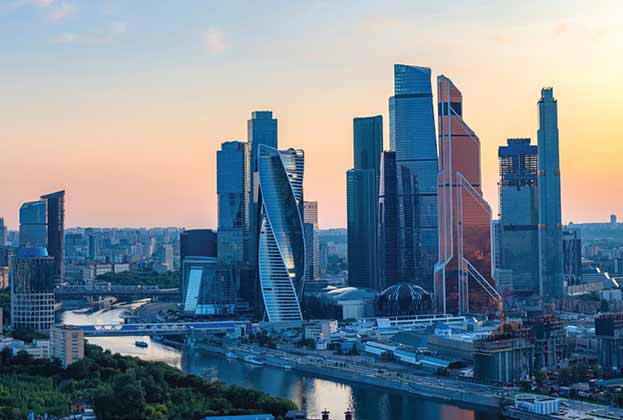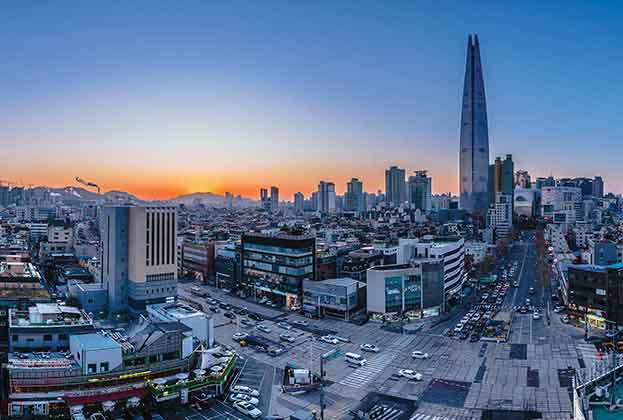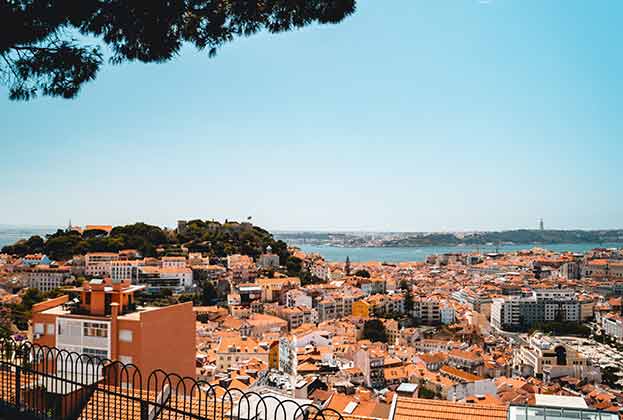Just nine out of the 28 cities in our index saw positive prime capital value movements over the first six months of 2020
Seoul and Moscow recorded the strongest price rises in the first half of the year, with an increase of 5.5%. South Korea largely avoided a lockdown and hence any significant associated disruption to the market. Seoul’s housing market has been on an upward trend for the past few years, driven by historically low interest rates and government policies that have also limited new supply further driving price increases.
In Moscow, the prime residential market is driven predominately by domestic demand and fluctuations in prices are influenced by domestic factors. Covid-19 caused the price of oil and the value of the Russian ruble to fall sharply, driving capital into the property market which is viewed as a secure investment. The fall in the ruble also provided a good opportunity for Russian buyers who hold other currencies to purchase property.
Seoul and Moscow recorded the strongest price rises in the first half of the year, with an increase of 5.5%
Savills World Research
In Europe, the best performers were Berlin, Amsterdam and Paris. These European capitals have seen high levels of demand and limited supply in recent years, driving price growth even during the pandemic and associated lockdowns.
In China, pent-up demand and credit easing from the Chinese central bank (PBoC) saw values in some Chinese cities rise marginally in the first six months of the year, with Shenzhen, Hangzhou and Shanghai experiencing marginal price rises over this period.
Meanwhile, Beijing and Guangzhou saw minimal price falls. Beijing was disproportionally hit by lockdown measures, while prime values in Guangzhou had already started to plateau prior to the crisis, having previously seen some fast gains.
Tokyo was the only other city in Asia to see positive price movement in the first six months of the year, driven by tight supply and domestic demand.
Prices fall fastest in Mumbai
Mumbai saw the largest decline over the first half of 2020, down 5.8%. The Indian city is grappling with oversupply in the prime market and has been badly impacted by lockdown measures.
Elsewhere in Asia Pacific, Sydney, Hong Kong and Bangkok also experienced the next largest falls for the first six months of the year, as the impact of Covid-19 weighed on the market.
Prior to the crisis, Sydney’s market had been performing well, supported by lower interest rates, increasing immigration, and growth in demand. Meanwhile, Hong Kong and Bangkok had seen price declines due to political uncertainty and oversupply respectively.
Weakening demand characterises US cities
In the US, Los Angeles experienced the largest falls in the first six months of the year. The city was badly impacted by the coronavirus pandemic over this period, and unemployment rose to 20.6% in May, up from just 4.6% in February. New York was also badly impacted by the virus over this period, while the city is also dealing with oversupply in the prime market and values had already been moving downward over the past few years as a result. Miami and San Francisco saw comparatively smaller falls. Florida had initially been less impacted by the pandemic, compared to California and New York in the first half of the year, while supply remains tight in San Francisco.
Mixed picture in Europe
While Berlin, Amsterdam and Paris continued to see price rises in the first half of 2020, other cities recorded falls. Lisbon saw the largest decline in the first six months of 2020. As well as the impact of Covid-19, there had been uncertainty over the city’s continuing participation in the country’s golden visa programme, although due to Covid-19 the changes to the scheme have been put on hold. In Spain, prime prices in Madrid and Barcelona fell 2.1% and 1.8% respectively over this period. Spain was hard hit by the pandemic and stringent long-lasting lockdown measures, but prime supply in both cities remains scarce, preventing larger price falls.
London and Geneva both experienced similar, albeit marginal, price falls over this period. The housing market in Switzerland is generally a stable market and sellers in Geneva held relatively steady on price, despite a fall in international demand.
In London, some certainty had returned to the market prior to the crisis as there had been more clarity over Brexit. The market here has seen a significant recovery in activity since reopening in May, supported by pent-up demand that accumulated during lockdown. However, buyers’ budgets have generally fallen, meaning the market remains price sensitive.
Where do values currently stand?
Despite seeing prices falls since June 2019, Hong Kong remains the most expensive city in the world for prime residential property, with values 78% above second-ranked New York, and 99% above third-ranked Tokyo as of June 2020.
Geneva ranks fourth and is the highest valued European city in the index, 9% above London in fifth place and 23% above Paris, which ranks seventh.
Kuala Lumpur and Cape Town are the best value cities in the index, and the only cities where prime values are under $300 per square foot. Madrid and Barcelona offer value at a European level, where prime prices are 64% and 66% below Geneva, respectively.
Read the articles within Savills Prime Index: World Cities below.
.jpg)


.jpg)

